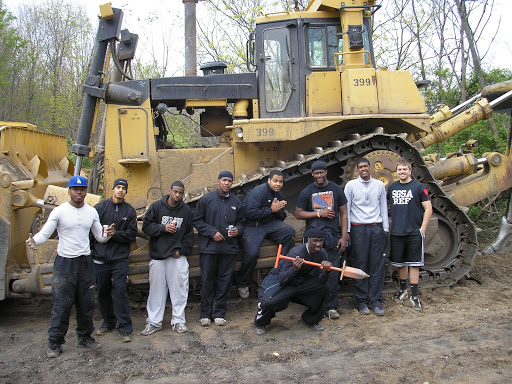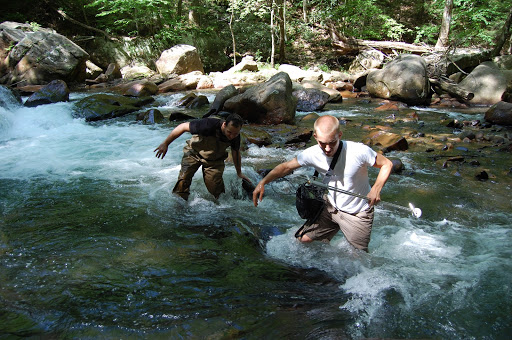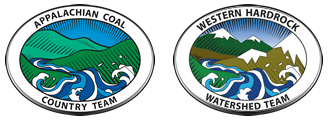Based on the work of
USDA Forest Service-Center for Wetlands and Stream Restoration
Eastern Kentucky
Tom Biebighauser has partnered with Morehead State University’s athletic department to recruit student athlete volunteers to clean up the watershed. At this school, all athletic teams are required to volunteer. One team in particular helps out four times a year with projects. Biebighauser advises: Saturdays are usually the best day to assign projects, keep them for only a few hours, and provide lunch. To begin, find projects suitable for student athlete participation. Then, contact the school’s athletic department and establish a rapport with a coach. This establishes the availability of volunteer work and eventually coaches may seek out your organization for projects.

Tested by
Friends of Deckers Creek
Northern West Virginia
Friends of Deckers Creek’s (FODC) intentions were to capture the student athlete resource from the local university, West Virginia University (WVU), in order to gain a willing and able workforce to complete some of the organization’s more daunting tasks. Contacting student organizations was difficult because either the presidents of these organizations are full-time students with many other things to deal with or the paid staff members are unwilling to let athletes participate unless it is a school requirement. Over 30 athletic teams and organizations were initially approached for this program and five showed interest in partnering. In April, the remaining 25 organizations were approached again and another four or five demonstrated interest in partnering with FODC. Group-based volunteer opportunities were filled with willing and able student athletes. FODC’s time spent coordinating volunteers was reduced significantly because they were able to contact one individual, either a coach or representative, who would bring their entire team, club or organization to a volunteer opportunity. Overall, participating organizations took part in four litter clean-ups (15-20 people each), Deckers Creek Adventure Day Race (over 65 volunteers), quarterly and monthly water quality monitoring (over 120 hours of volunteerism), and fundraising mailings (4 or 5 people for 15 volunteer hours).
Tested by
Georges Creek Watershed Association
Western Maryland
George’s Creek Watershed Association (GCWA) planned to do an Appalachian Regional Reforestation Initiative (ARRI) tree planting project in their watershed and needed volunteers to make it successful. GCWA wanted to forge a better relationship with nearby Frostburg State University (FSU), so reaching out to student athlete volunteers for this trial practice seemed like a great way to build that relationship. After some issues finding a good contact person were resolved, GCWA was able to work with FSU’s Office of Leadership and Civic Engagement. The contact person helped to compile a list of all FSU coaches and aided in composing an e-mail to draw interest. GCWA was able to recruit the FSU football team to help an AmeriCorps National Civilian Community Corps (NCCC) crew plant trees on reclaimed mine lands in partnership with ARRI. Twenty football players and five coaches assisted the NCCC in planting 4,000 trees on 7 acres in 4 hours, which was part of a larger 10-day project where a total of 8,000 trees were planted on 11 acres by 135 volunteers recruited by the GCWA.

“In my limited experience I would tend to only recommend this trial practice for watershed groups that need labor done like tree plantings or stream clean-ups. Some of the volunteers we had were really enthusiastic and funny, but I think a lot of them just liked being outside, doing the manual labor and working hard. If you found a particularly enthusiastic team you could have them help with outreach, but you would probably need to get to know your volunteers first.”
-George’s Creek Watershed Association
